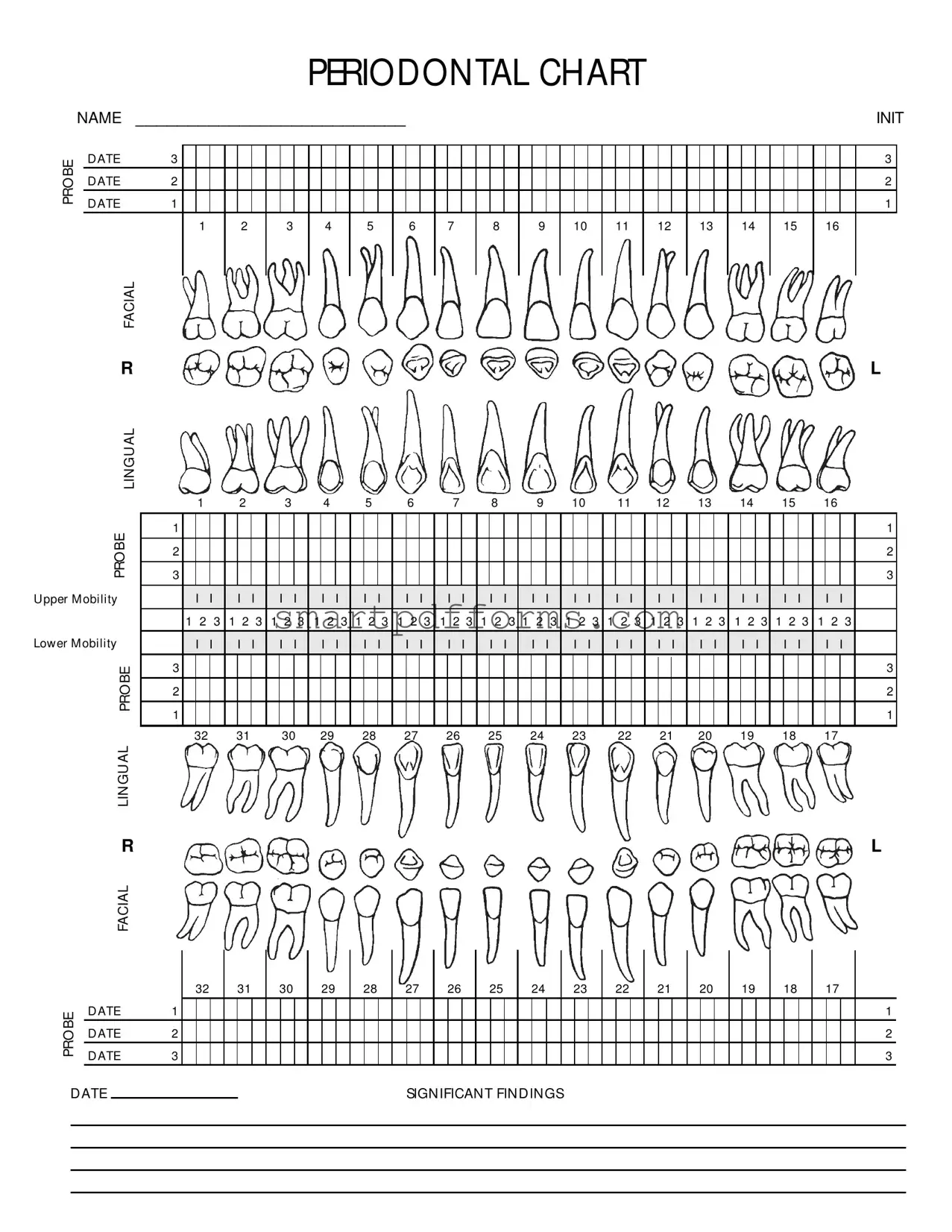Blank Perio Chart PDF Template
The Perio Chart form serves as a detailed record for patients undergoing periodontal treatment, tracking various metrics such as Probing Depth (PD), Clinical Attachment Loss (CAL), and Bleeding on Probing (BOP), among others. This document is vital for evaluating the state of a patient's periodontal health, guiding both initial treatments and ongoing maintenance efforts. For healthcare professionals and patients alike, completing and updating this form is crucial for effective periodontal care management.
Ready to ensure your periodontal health is accurately monitored? Click the button below to fill out your Perio Chart form.
Make This Document Now

